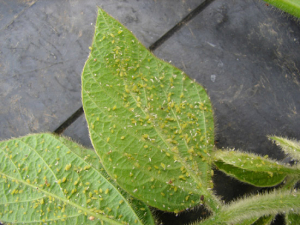In addition to disease and natural hazards, pests can also do extensive damage to shrubs if left unchecked. Andy’s can help you to defeat these unwanted pests and keep your yard looking healthy and beautiful. Some of the most common culprits are:
 LACE BUGS – suck sap from the underside of leaves. Leaf stippling and bleaching of leaves usually appear in the summer and can be distinguished from mite feeding by the presence of cast skins and dark specs of excrement that lace bugs deposit on the lower leaf surface. They produce honey dew which drops to the foliage below and becomes blackened by sooty mold fungi.
LACE BUGS – suck sap from the underside of leaves. Leaf stippling and bleaching of leaves usually appear in the summer and can be distinguished from mite feeding by the presence of cast skins and dark specs of excrement that lace bugs deposit on the lower leaf surface. They produce honey dew which drops to the foliage below and becomes blackened by sooty mold fungi. APHIDS – are small, soft-bodied insects with long, slender mouth parts that they use to pierce stems, leaves and other tender plant parts and suck out the plant fluids. Aphids often feed in dense groups on leaves or stems. When the weather is warm, many species of aphids can develop from newborn to reproducing adult in 7 to 8 days. Because each adult aphid can produce up to 80 offspring in a matter of a week, aphid populations can increase very quickly.
APHIDS – are small, soft-bodied insects with long, slender mouth parts that they use to pierce stems, leaves and other tender plant parts and suck out the plant fluids. Aphids often feed in dense groups on leaves or stems. When the weather is warm, many species of aphids can develop from newborn to reproducing adult in 7 to 8 days. Because each adult aphid can produce up to 80 offspring in a matter of a week, aphid populations can increase very quickly. WHITE FLIES – are tiny, sap sucking insects that are frequently abundant in vegetables and ornamental plants. They excrete sticky honey dew and cause yellowing or death of leaves. White flies usually occur in groups on the underside of leaves. White flies develop rapidly in warm weather and populations can build up quickly. Management of heavy white fly infestations is very difficult. The best strategy is to prevent problems from developing in your garden.
WHITE FLIES – are tiny, sap sucking insects that are frequently abundant in vegetables and ornamental plants. They excrete sticky honey dew and cause yellowing or death of leaves. White flies usually occur in groups on the underside of leaves. White flies develop rapidly in warm weather and populations can build up quickly. Management of heavy white fly infestations is very difficult. The best strategy is to prevent problems from developing in your garden. SPIDER MITES – are just visible to the human eye. They look like little red spiders. They also make a visible web that looks like debris on the underside of the leaf, not on top. Mites usually start becoming a problem in late spring and reach a peak by late summer. In summer, their life cycle is about 7 to 10 days that is hatching to laying eggs after a week or two.
SPIDER MITES – are just visible to the human eye. They look like little red spiders. They also make a visible web that looks like debris on the underside of the leaf, not on top. Mites usually start becoming a problem in late spring and reach a peak by late summer. In summer, their life cycle is about 7 to 10 days that is hatching to laying eggs after a week or two.